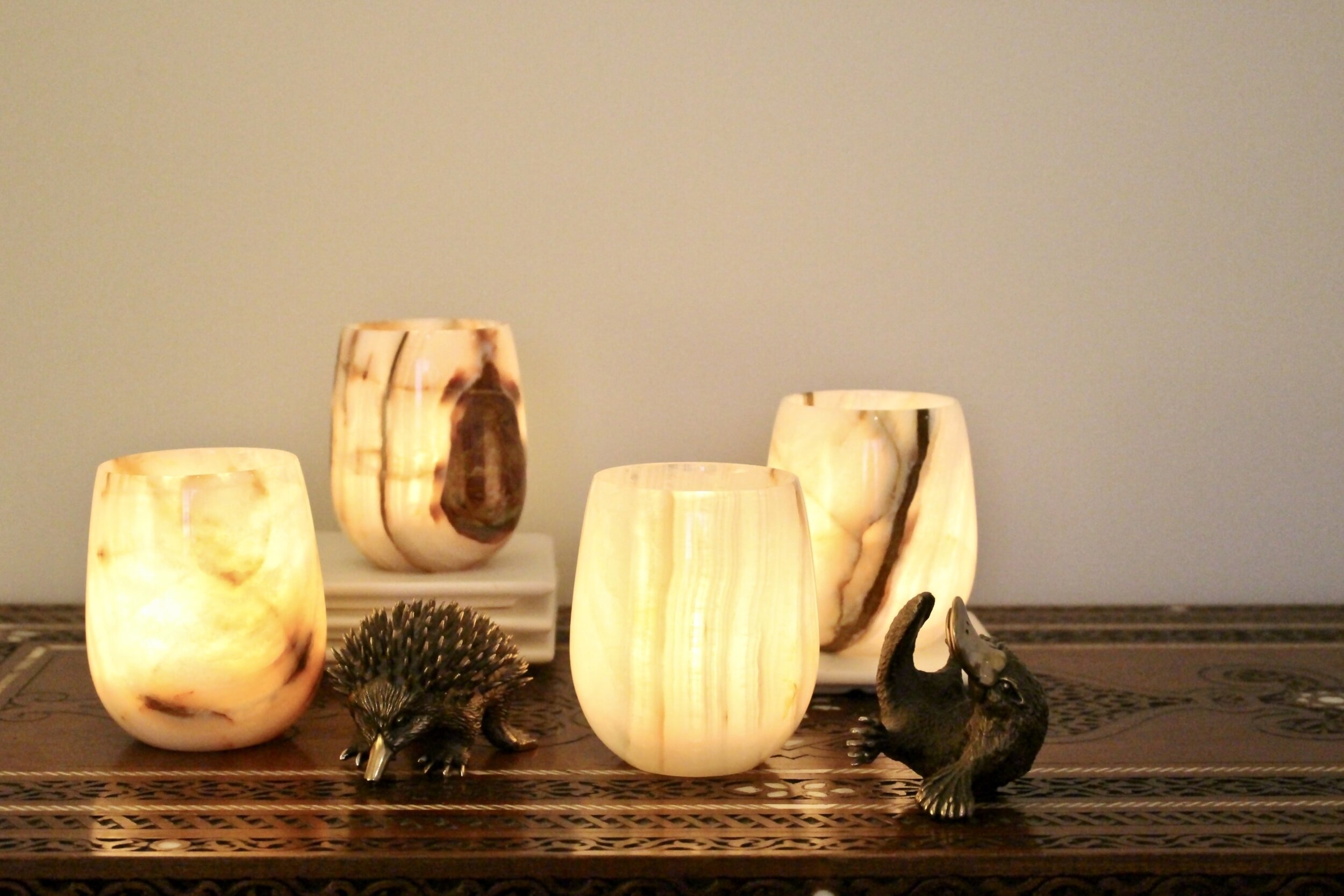Product Detail - Onyx Stone
The Beauty of Onyx
A First-Timer’s Guide To Onyx
To be honest I had never heard of onyx before good fortune and a happy chance conversation led me to the artisan crafters of this wonderful stone. I have since discovered that onyx is one of those natural materials that is little known and often misunderstood by many.
It is most commonly known in its black gemstone form, which is generally used for jewellery due to its rarity. However, it was the white and brown sardonyx and banded calcite which is much more abundant that piqued my interest. These are less well known but are just as beautiful in their own way - if not more so in terms of interest due to its variety of colours and patterns and its translucence even though it’s solid rock.
Seen best when backlit when it radiates a soft, ethereal light. It has a varied and multihued colour palette where bands of colours and tones fuse together in a fluid pattern to create each pieces which are entirely unique.
Onyx is truly an extraordinary stone whichever mineral form that it takes. Wherever and however it is used it will be an eye catching piece made all the more interesting due to its translucence.
Onyx containers - can be used as coolers, candle holders or untippable vases.
What Is Onyx Stone Made Of?
True onyx is a variety of stone that comes from chalcedony, a silicate mineral, mostly made of calcite similar to marble, limestone and granite. While granite, quartzite, and marble are all forged deep within the earth’s crust, onyx, sardonyx or more commonly banded calcite is born right on the surface. Onyx is naturally formed from calcite inside caves and crevices or around the exits of springs. Veins of banded calcite can also be found in fractured limestone, or even in volcanic rocks.
The flowing layers of onyx reflect subtle variations in the mineral-laden groundwater which drips from the ends of stalagmites and stalactites into these caves. With this water flow and then its evaporation, traces of alternating silica minerals – quartz and moganite – are left behind which create intricate parallel bands of varying colours. The variations between the layers are caused by differences in the water flow rate and the minerals involved. The resulting patterns and bands can be found in slabs of onyx by slicing down into the layers, revealing natures artistry in thousands of years of deposits.
In its most pure state true onyx and even banded onyx calcite is white or clear, but it’s easily tinted by minor amounts of other minerals. The most common colour of onyx is a warm amber colour, which is caused by iron oxide but it can also be found with brown, green, grey or rose tones.
Agate is often mistaken for onyx, as it is formed in the same way. However, the layers produced when agate forms are not parallel. Instead, the alternating bands are produced in a more dramatically curved formation. Basically, beautiful formations of crystals can be created anywhere that mineral-laden groundwater flows.
How To Best Use Onyx
Onyx despite being a somewhat fragile and porous stone, can be used in numerous ways to best bring out it beauty and uniqueness. In it’s grandest use, high-end restaurants and resorts employ onyx bar tops to bring brilliance into a space. An effect that is made even more spectacular when the stone is backlit. In our homes onyx can also be used as a backsplash, vanity, as accent tiles or for a tabletop.
At KeapSake it made the most sense to design products that maximise the beauty and benefit of this wonderful stone often in products that can be used in multiple ways. One of the most extraordinary qualities of onyx is its translucence and hence ability to radiate light. Any application that takes advantage of this quality, such as lamps and candle holders, is sure to make a beautiful statement.
With its natural tones and textures and resulting uniqueness, onyx’s appeal is universal. It’s will draw you in. Few of us can pass it by without pausing to admire the patterns and plays of light, and marvel at how natural materials are unparalleled in their artistry. There truly is no artist greater than Mother Nature for the sheer variety of materials and patterns she can create.




